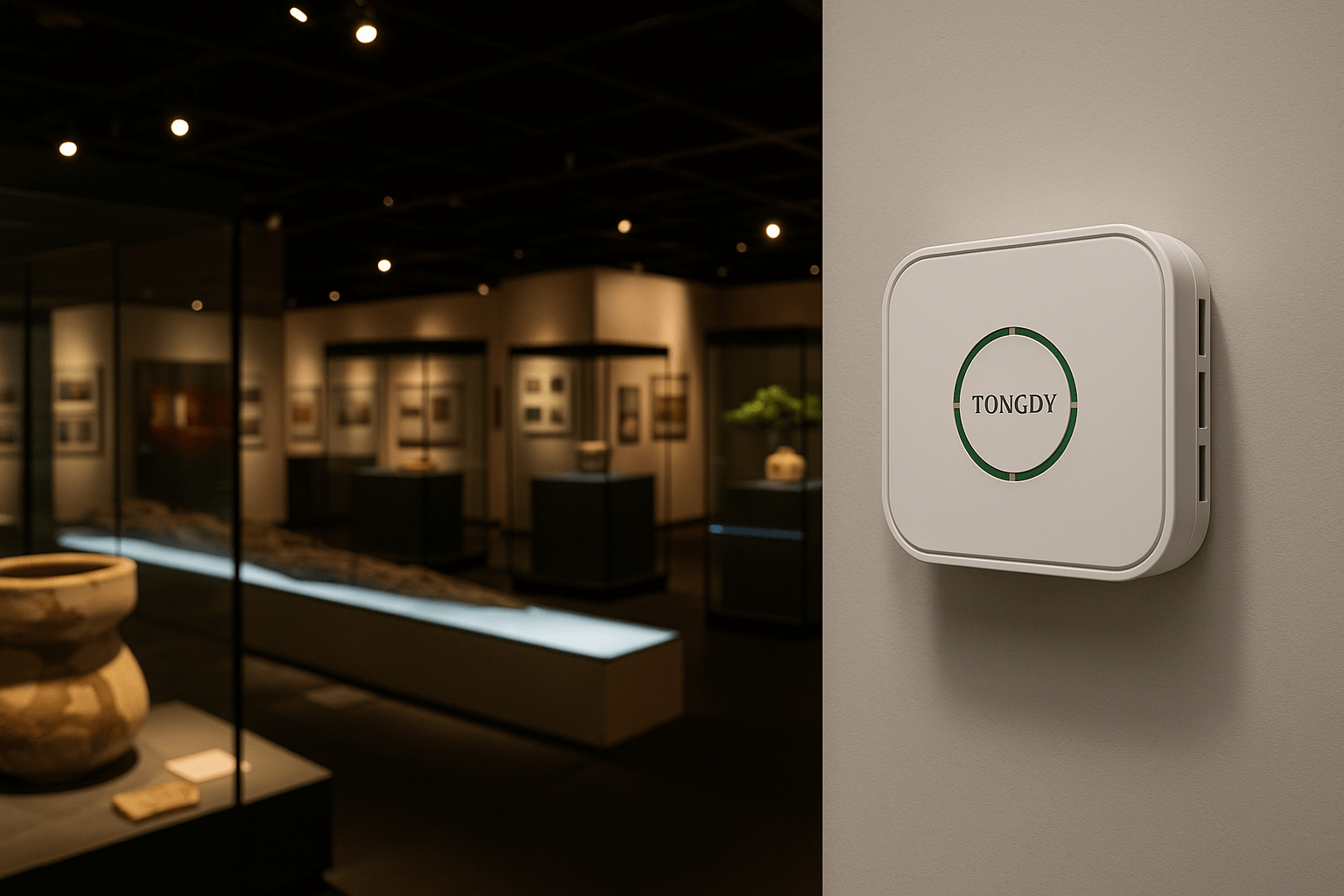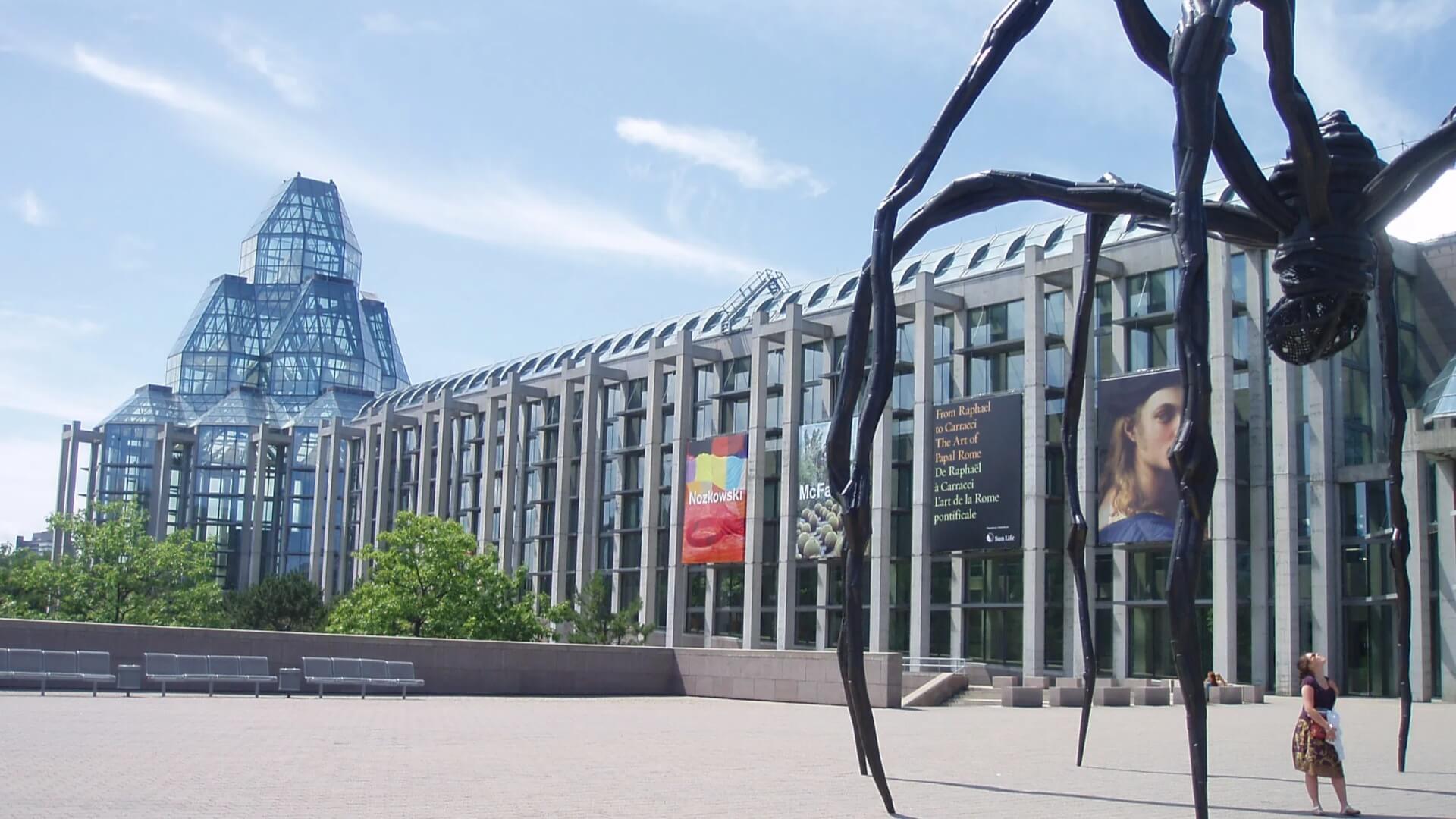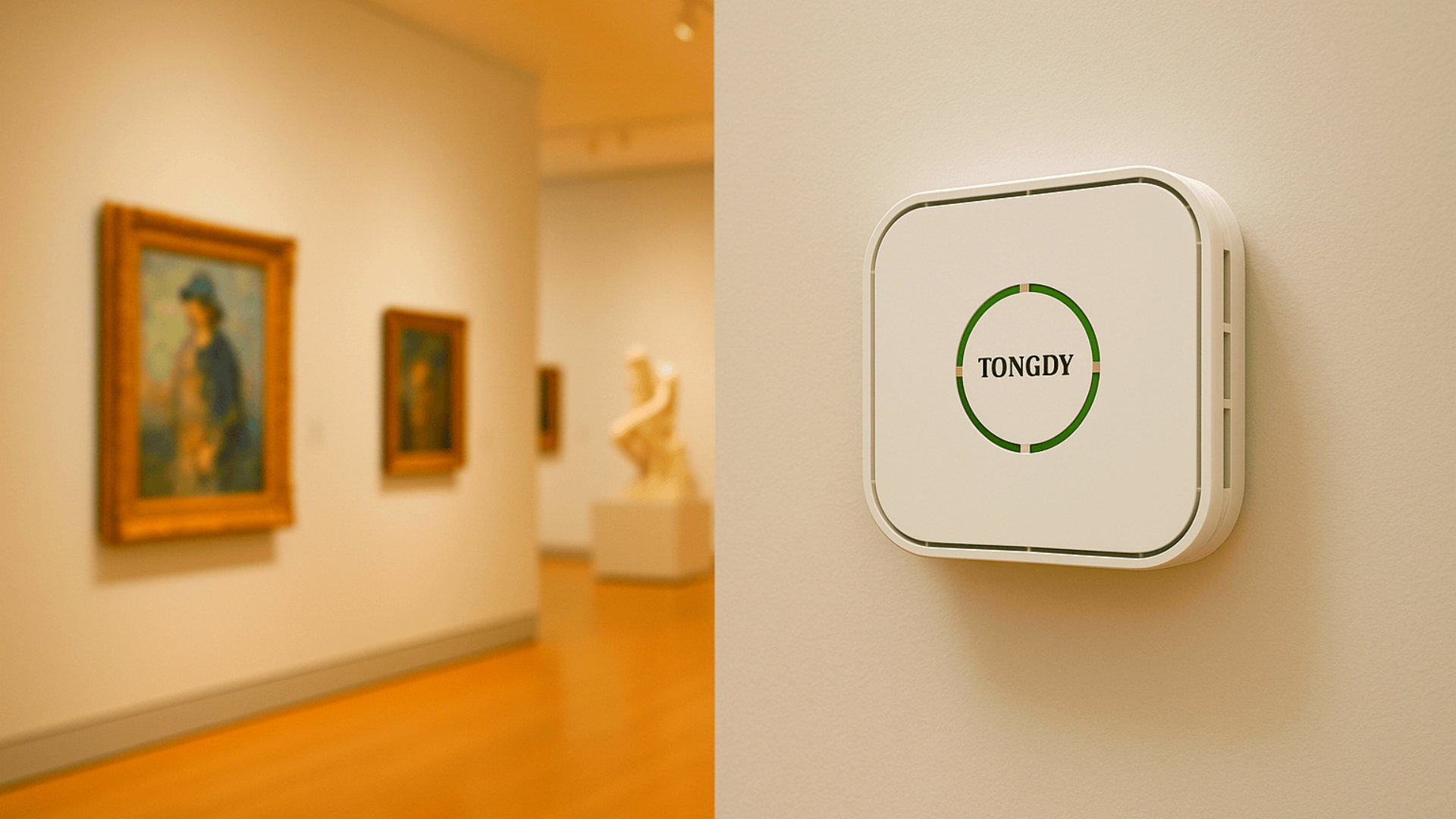Project Background
National Gallery of Canada has recently undergone a significant upgrade aimed at enhancing both the preservation of its valuable exhibits and the comfort of its visitors. To meet the dual goals of protecting delicate artifacts and ensuring a healthy indoor environment, the museum selected Tongdy’s MSD Multi-Sensor Indoor Air Quality Monitor as the core solution for real-time environmental monitoring and smart data integration.
Challenges in Museum Air Quality Management
Galleries and museums face unique air quality challenges:
Exhibition spaces require stable temperature and humidity, often necessitating sealed windows and limited ventilation.
During peak hours, high foot traffic can lead to elevated CO₂ levels, causing discomfort and fatigue among visitors.
Sparse visitor flow at other times leads to energy waste due to over-ventilation.
Newly introduced promotional materials may emit VOCs, contributing to indoor air pollution.
Aging ventilation systems struggle with precise fresh air regulation.
Canada’s increasingly stringent green building codes are pushing cultural institutions to optimize energy efficiency and indoor air quality.
Why Tongdy’s MSD Was the Smart Choice
Advanced Features of the MSD Sensor
Tongdy MSD devices offer the following capabilities:
Simultaneous monitoring of eight key air quality parameters: CO₂, PM2.5, PM10, TVOC, temperature, and humidity. Optional modules include CO, formaldehyde, and ozone sensors.
High-precision sensors with proprietary compensation algorithms ensure accurate and stable readings across varying conditions.
Modbus protocol support, enabling seamless integration with Building Management Systems (BMS) and compliance with WELL v2 standards.
Seamless Integration with Existing Infrastructure
The MSD monitors were easily integrated with the museum’s legacy HVAC system. Through the Building Automation System (BAS), real-time data now drives automated ventilation adjustments, significantly reducing energy waste and enhancing operational responsiveness.
Installation and Deployment
A total of 24 MSD units were installed across key zones including exhibition halls, corridors, and restoration rooms.
Data Collection and Remote Management
All devices are connected via Modbus RS485 to a central monitoring platform, allowing real-time access to environmental data, historical trend analysis, and remote diagnostics—empowering engineers and facility managers to fine-tune HVAC parameters for optimal performance.

Results & Energy Savings
Air Quality Improvements
Post-implementation monitoring revealed:
CO₂ levels consistently maintained below 800 ppm
PM2.5 concentrations reduced by an average of 35%
TVOC levels controlled well within safety thresholds
Energy Efficiency Gains
After six months of operation:
HVAC run time reduced by 22%
Annual energy cost savings exceeded CAD 9,000
Operational Efficiency and Visitor Satisfaction
With automated climate control, facility staff now spend less time on manual adjustments and more on exhibition maintenance and visitor services.
Visitors also reported a noticeably “fresher” and more pleasant atmosphere, especially during busy periods.
Scalability and Future Applications
Expanding Use in Cultural Institutions
Tongdy MSD systems are already in use at dozens of global institutions, including theaters, embassies, libraries, and academic facilities.
Support for Green Building Certifications
MSD’s data capabilities strongly support applications for certifications such as LEED, WELL, and RESET, helping institutions meet sustainability goals.
Frequently Asked Questions (FAQ)
1. Is the MSD monitor suitable for older buildings?
Yes. MSD devices are highly compatible and can be installed on walls or ceilings in both new and renovated buildings.
2. Can I access data remotely?
Yes. The MSD system supports multiple communication protocols for cloud integration and remote monitoring.
3. Can it interface with ventilation systems?
Yes. MSD outputs via RS485 can directly control fan coil units or fresh air systems.
4. What if sensor readings become inaccurate?
Remote diagnostics and calibration are available via the MSD’s maintenance channel—no need to return the device to the factory.
5. Can the data be used for official certifications?
Absolutely. MSD data meets the requirements for WELL, RESET, and LEED green building certifications.
Conclusion: Smart Tech Empowers Cultural Sustainability
By adopting Tongdy’s MSD multi-parameter air quality monitoring system, Vancouver’s Gallery Museum has not only elevated its visitor experience and artifact protection but also significantly reduced energy consumption and operational overhead. This case exemplifies how intelligent environmental solutions are becoming essential tools in the sustainable evolution of cultural institutions worldwide.
Post time: Jun-11-2025


